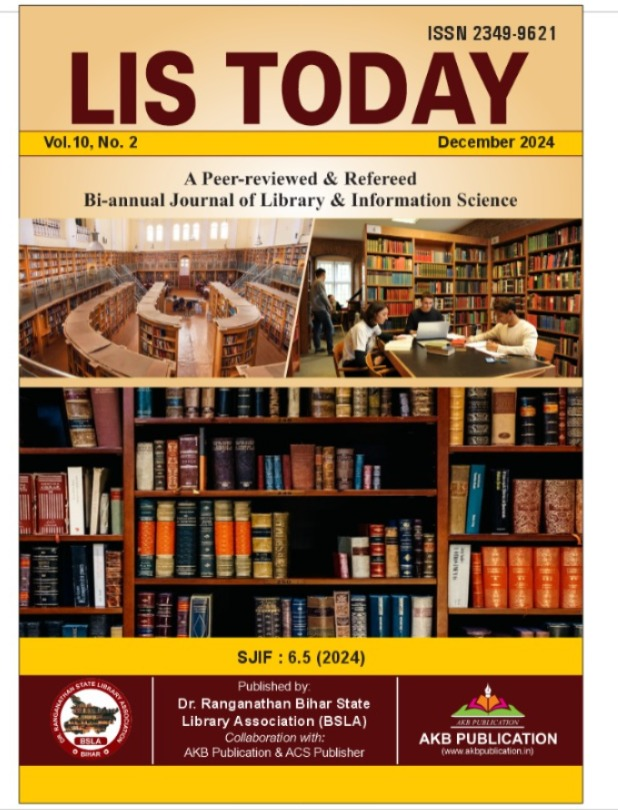Designing Thesaurus with Multilevel Hierarchy Systems
DOI:
https://doi.org/10.48165/lt.2025.11.1.9Keywords:
Multilevel Hierarchy, MultiTes, Semantic Web, Thesaurus, User ExperienceAbstract
Information retrieval systems are designed to retrieve information from a database quickly and accurately. A multilevel hierarchy is a recursive process that consists of logically related levels with relation and is represented in a linear sequence. They are intricate among the parts of a whole, statistically or dynamically. This paper explores the significance of incorporating multilevel hierarchy systems in designing a thesaurus. It aims to enhance the efficiency and usability of the linguistic resources. Thesauri are crucial in information retrieval, establishing semantic relationships between words. Traditional thesauri have employed a single-level hierarchy, but recent advancements in information organization and retrieval call for more sophisticated structures to accommodate the complexities of language and user needs. This article presents the methodologies and benefits of designing thesauri with multilevel hierarchy systems, which not only enhance the efficiency and usability of linguistic resources but also significantly improve the accuracy and speed of information retrieval.
References
Dykstra, M. (1989). Subject analysis and thesauri: A background. Art Documentation: Journal of the Art Libraries Society of North America, 8(4), 173–174. https://www.jstor.org/sta ble/27948126
Eid, S. (2022). A proposed Arabic monolingual web-based ter minology management system. Journal of Library Metadata, 22(1–2), 47–61. https://doi.org/10.1080/19386389.2022.2042 168
Soglasnova, L., & Hanson, M. (2015). Socially responsive design
Mandal and Mandal Designing Thesaurus with Multilevel Hierarchy Systems and evaluation of a workers’ compensation thesaurus for a community organization with selective application of cogni tive work analysis: A case study. Cataloging & Classification Quarterly, 53(8), 905–926. https://doi.org/10.1080/01639374. 2015.1044632
Spiteri, L. F. (2005). Word association testing and thesaurus con struction: A pilot study. Cataloging & Classification Quarterly, 40(1), 55–78. https://doi.org/10.1300/J104v40n01_05
Malik, S., & Mandal, S. (2022). Sparql and skos enabled multi lingual polyhierarchical thesaurus: Designing a framework. SRELS Journal of Information Management, 239–246. https:// doi.org/10.17821/srels/2022/v59i4/169656
Mandal, S. Developing Thesaurus Construction through Tematres for the College Libraries under the University of Burdwan. In ternational Journal of English Language, Literature and Hu manities. 2016, 4 (6). 302 -316. www.ijellh.com
Mandal, S. MultiTes: A Knowledge Organization Thesaurus Con struction Tool for College Libraries under the University of Burdwan. International Research Journal of Interdisciplinary
& Multidisciplinary, 2015, 63 – 79. http://www.irjims.com Nielsen, M. L. (2004). Thesaurus construction: Key issues and se lected readings. Cataloging & Classification Quarterly, 37(3– 4), 57–74. https://doi.org/10.1300/J104v37n03_05
Myntti, J., & Neatrour, A. (2015). Use existing data first: Reconcile metadata before creating new controlled vocabularies. Journal of Library Metadata, 15(3–4), 191–207. https://doi.org/10.108 0/19386389.2015.1099989
Stellato, A., Rajbhandari, S., Turbati, A., Fiorelli, M., Caracciolo, C., Lorenzetti, T., Keizer, J., & Pazienza, M. T. (2015). Voc bench: A web application for collaborative development of multilingual thesauri. In F. Gandon, M. Sabou, H. Sack, C. d’Amato, P. Cudré-Mauroux, & A. Zimmermann (Eds.), The Semantic Web. Latest Advances and New Domains (Vol. 9088, pp. 38–53). Springer International Publishing. https://doi. org/10.1007/978-3-319-18818-8_3
Sunny, S. K., & Angadi, M. (2018). Evaluating the effectiveness of thesauri in digital information retrieval systems. The Electron ic Library, 36(1), 55–70. https://doi.org/10.1108/EL-02-2017- 0033

